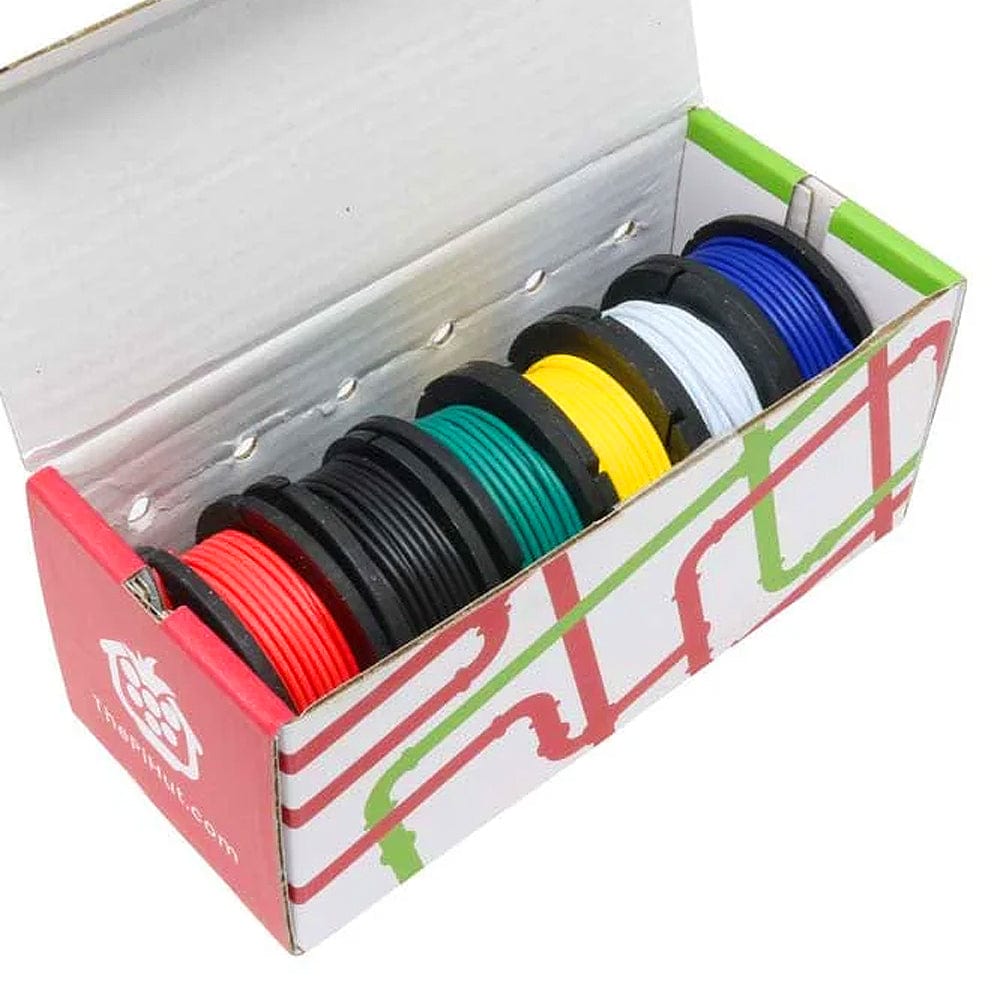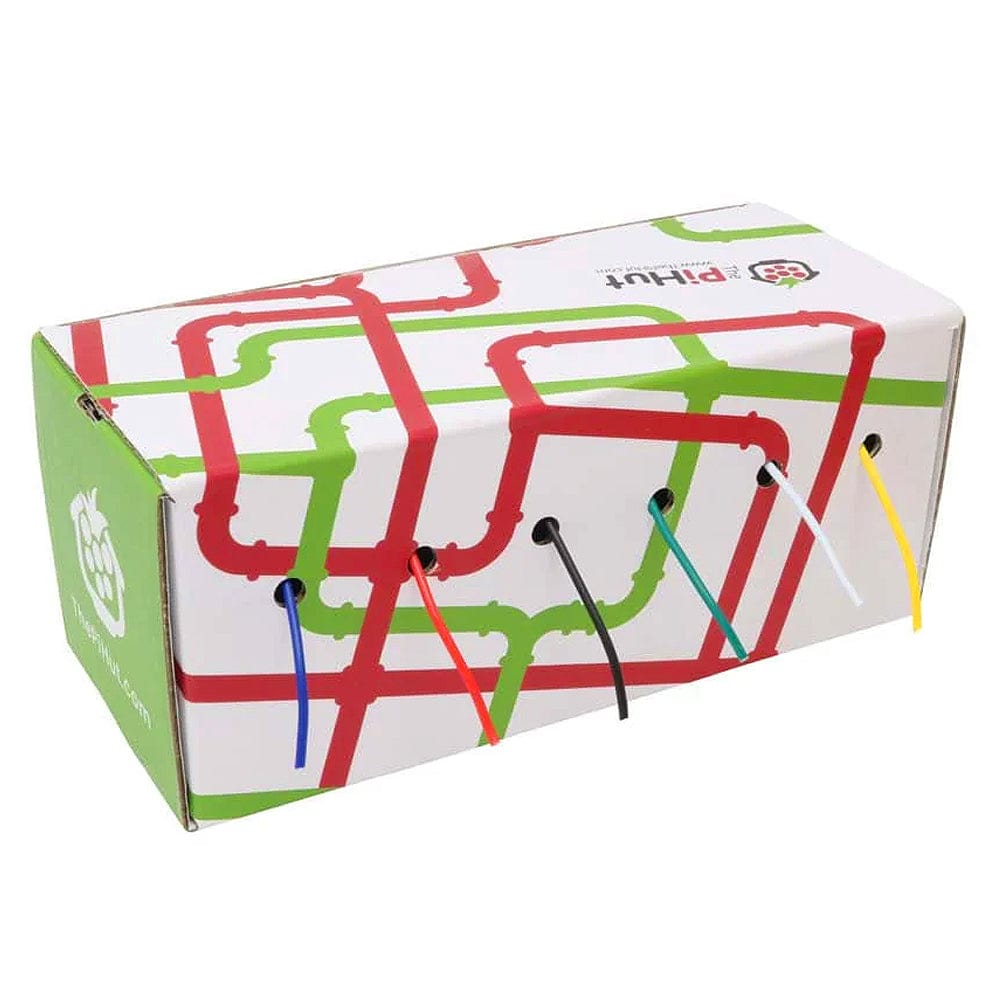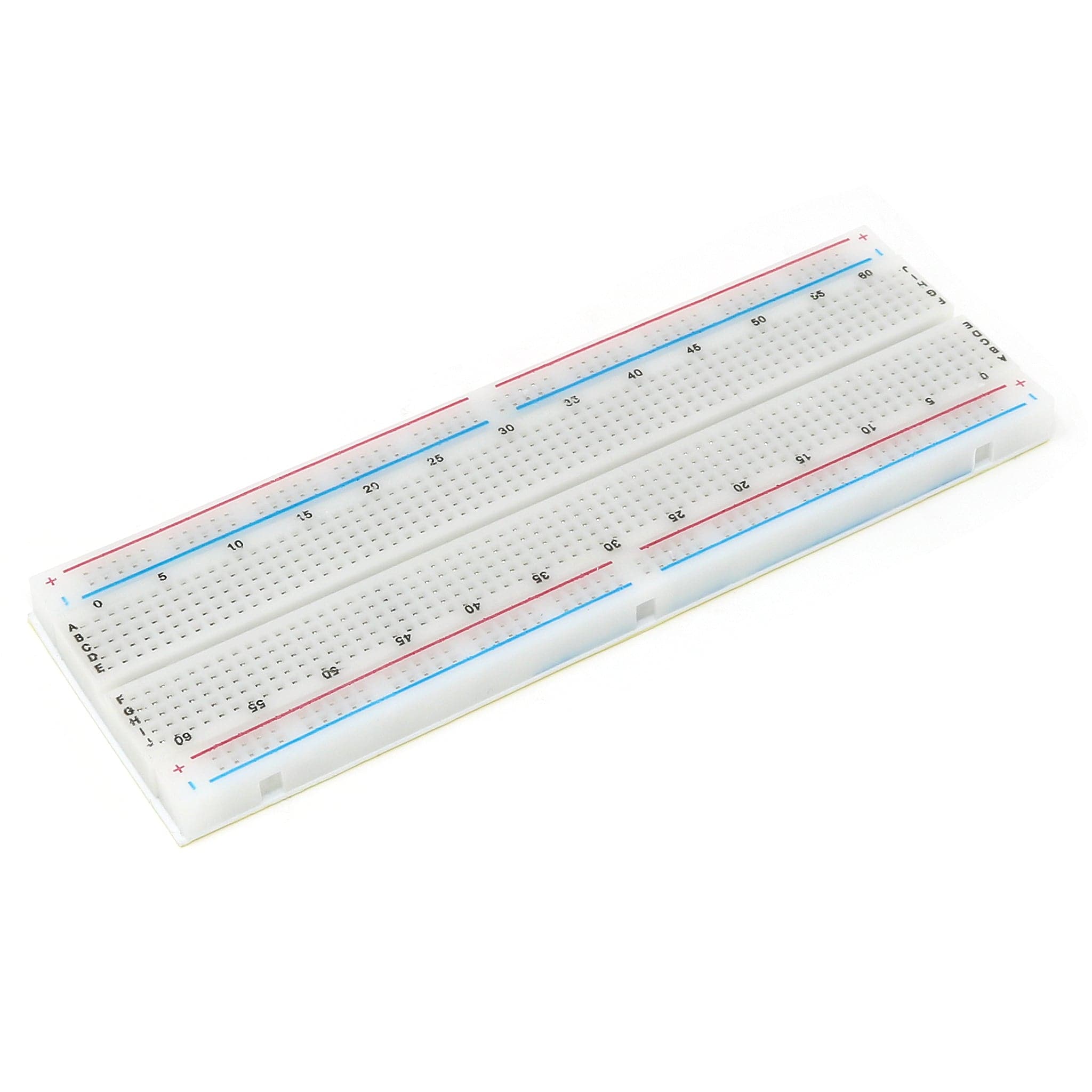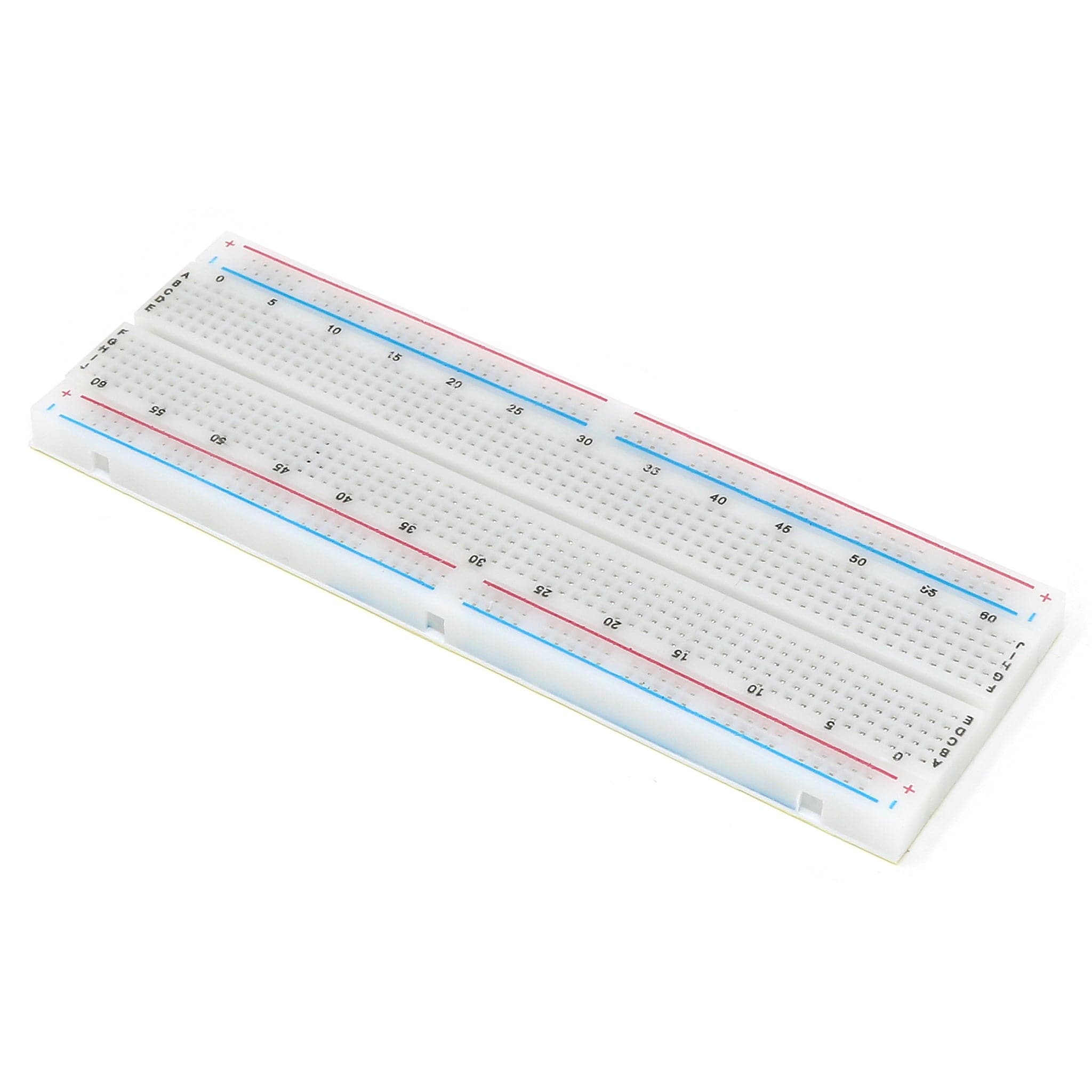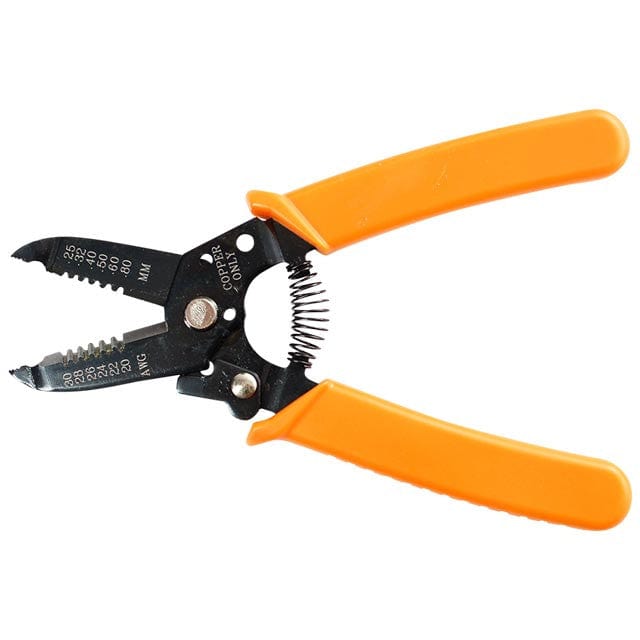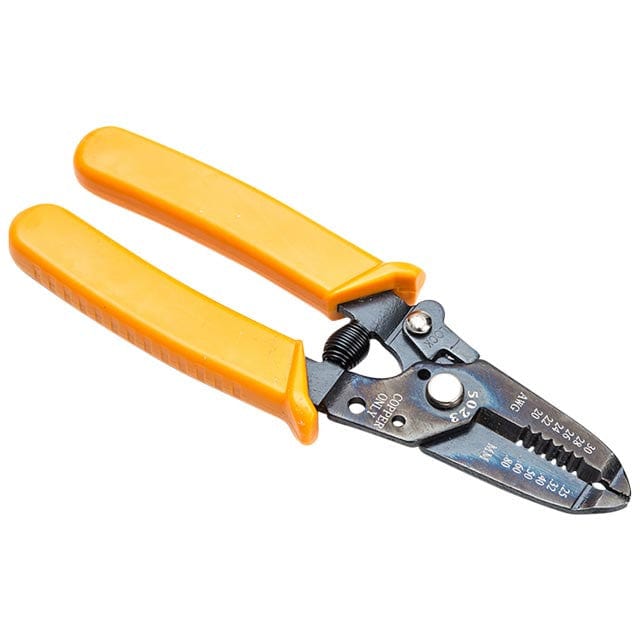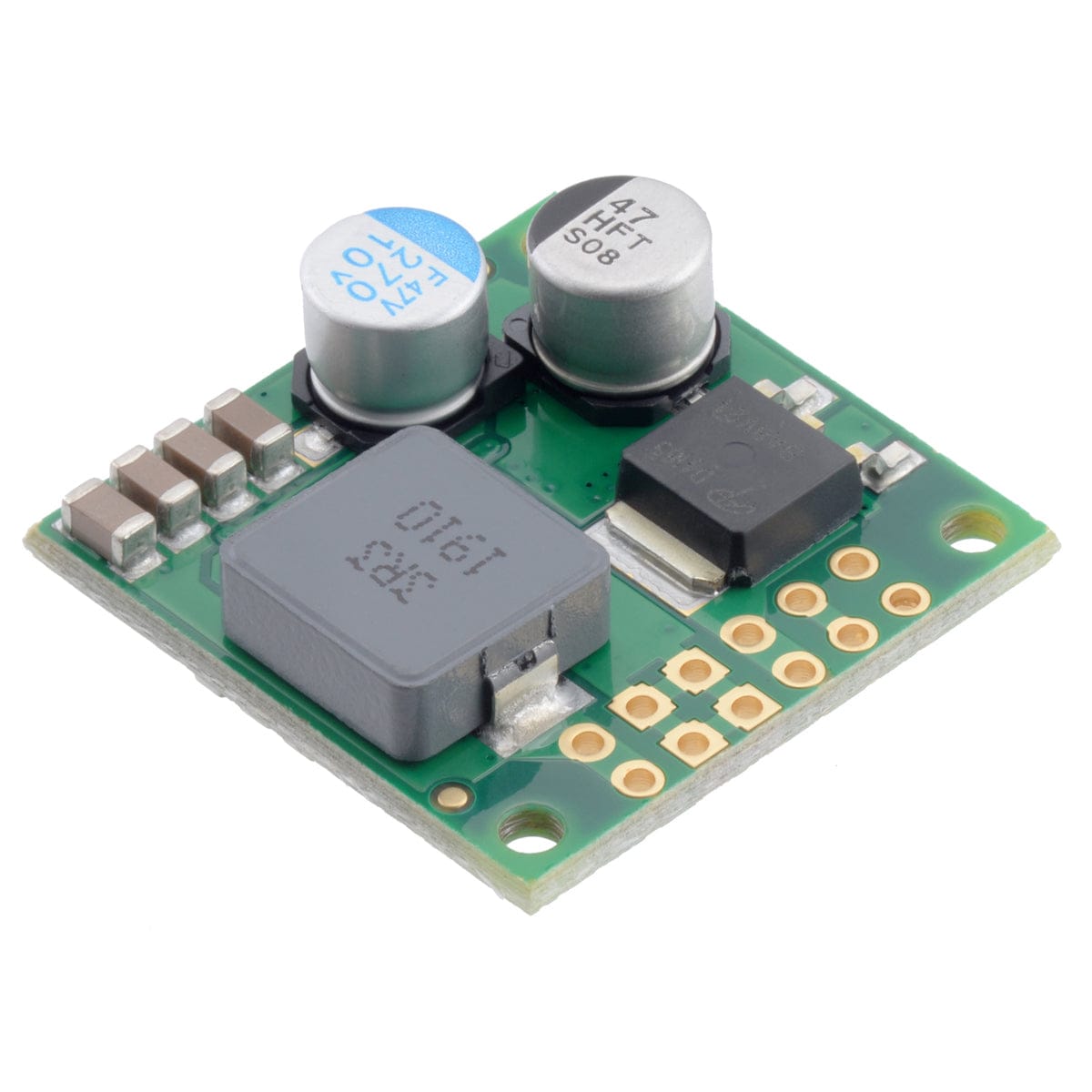
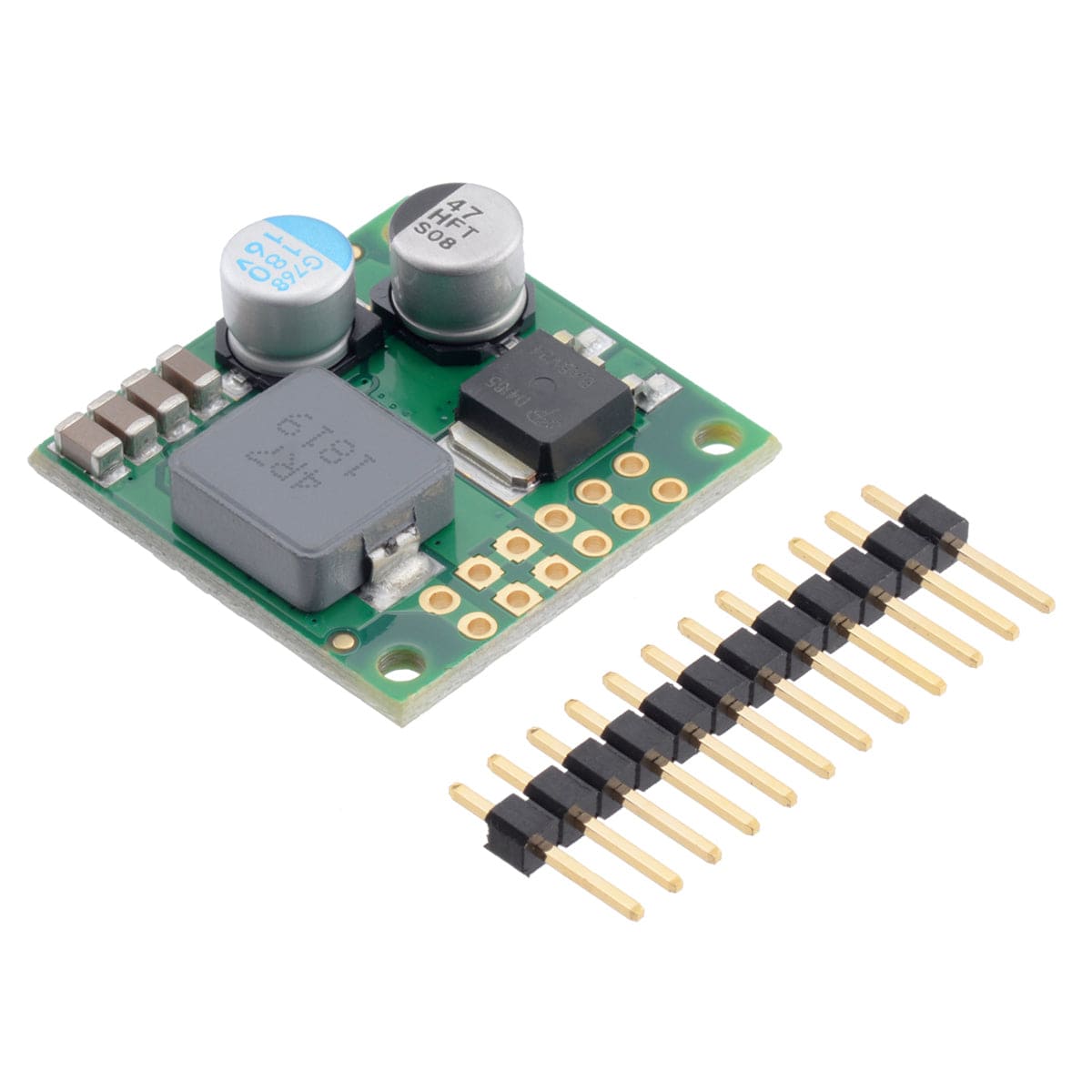
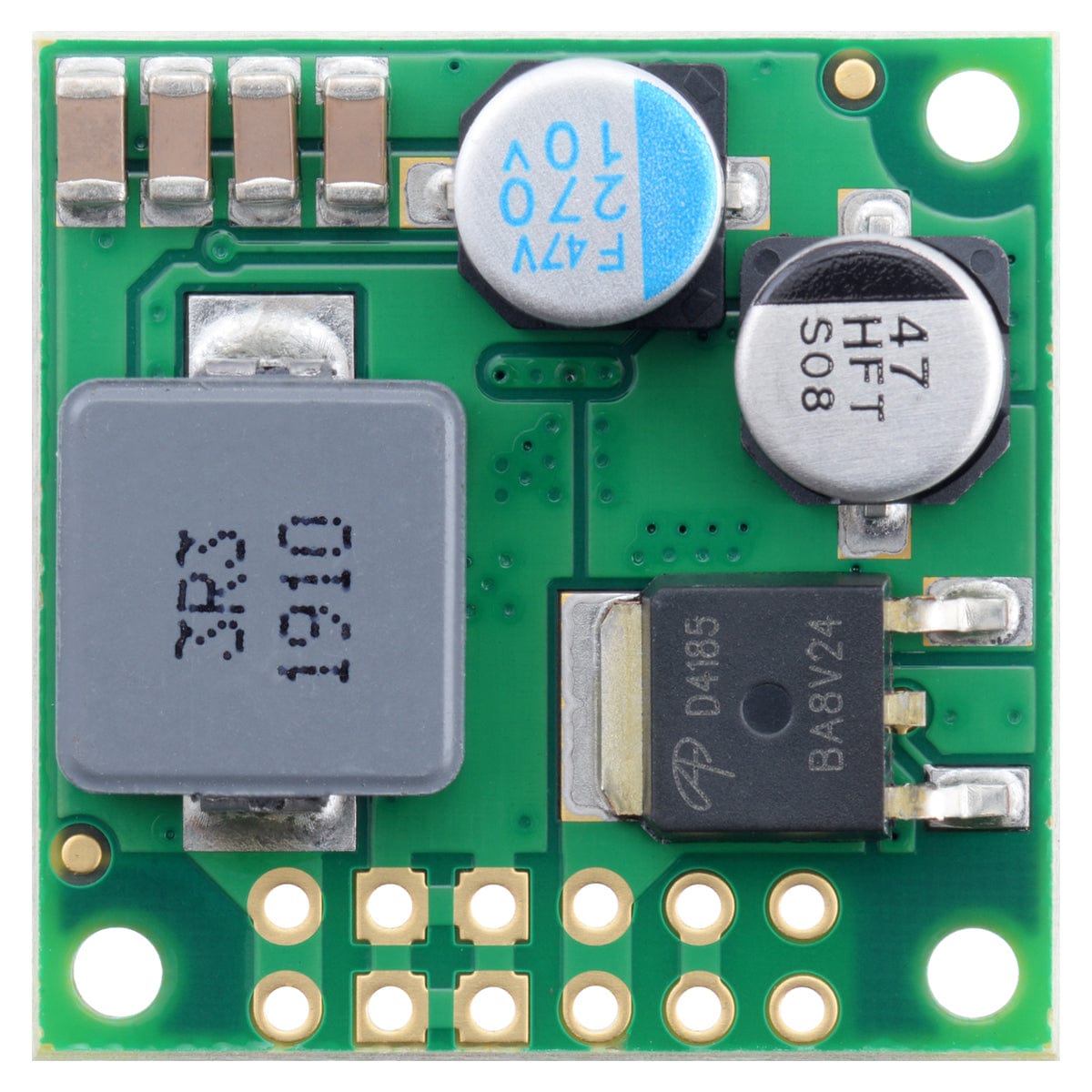
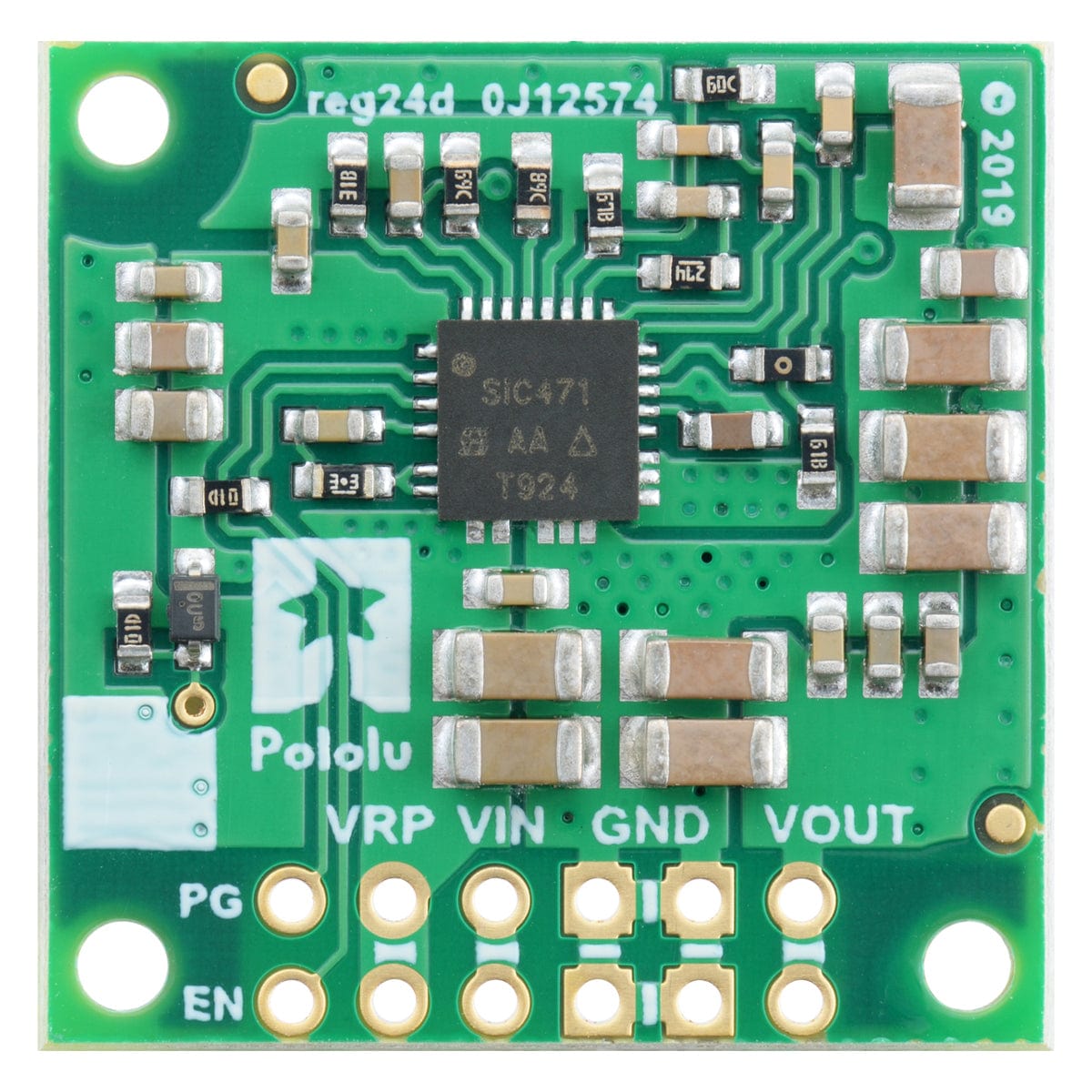
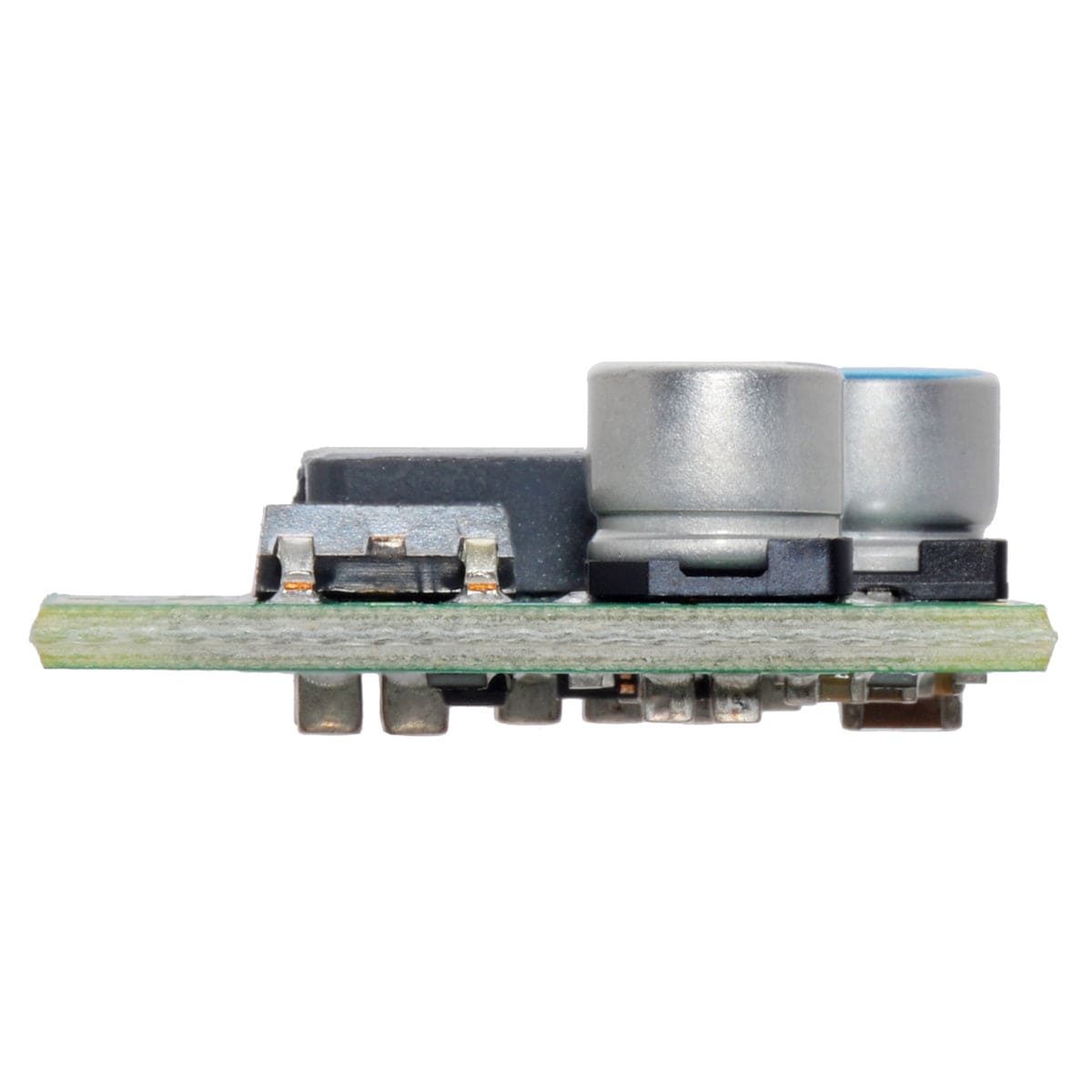
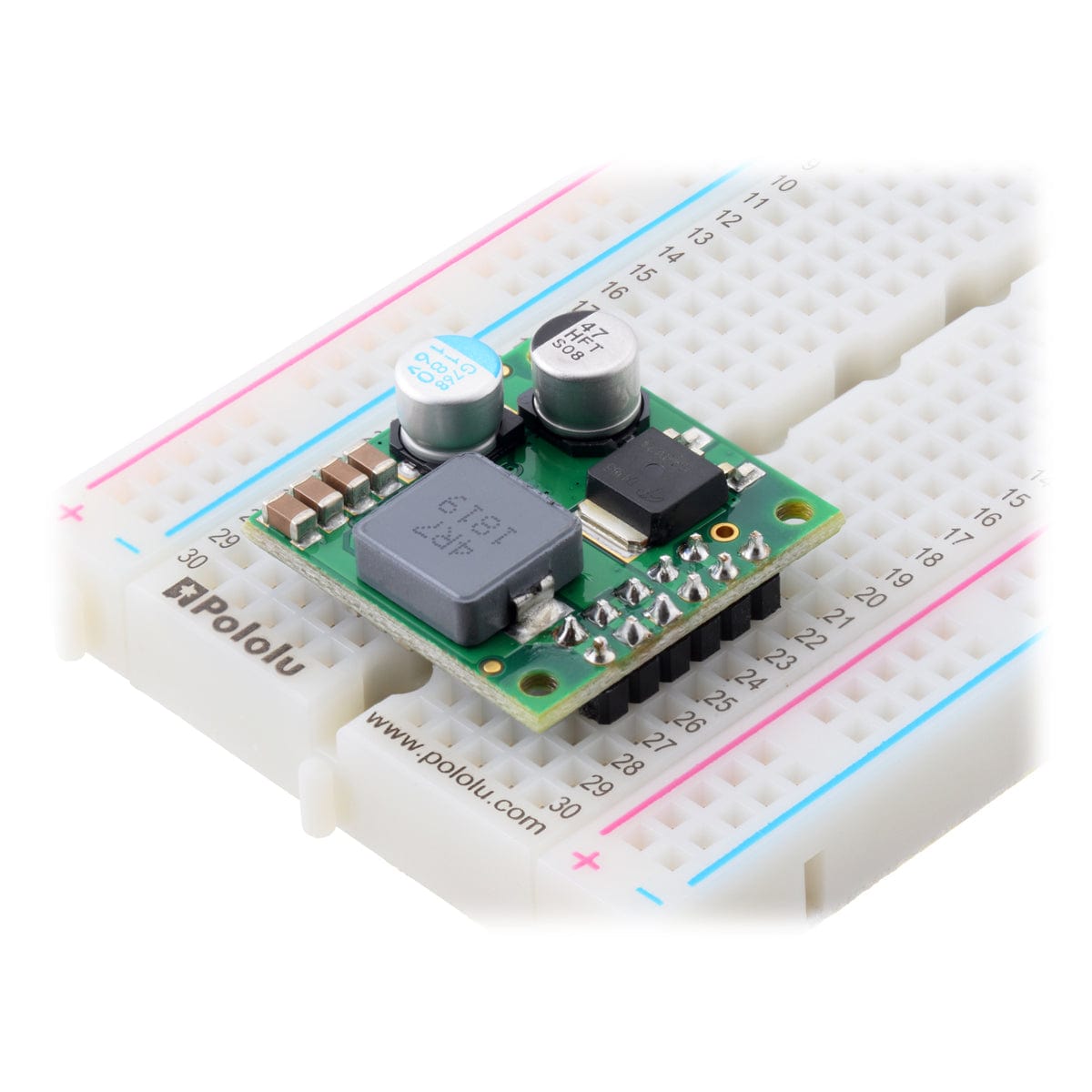
Login / Signup
Cart
Your cart is empty
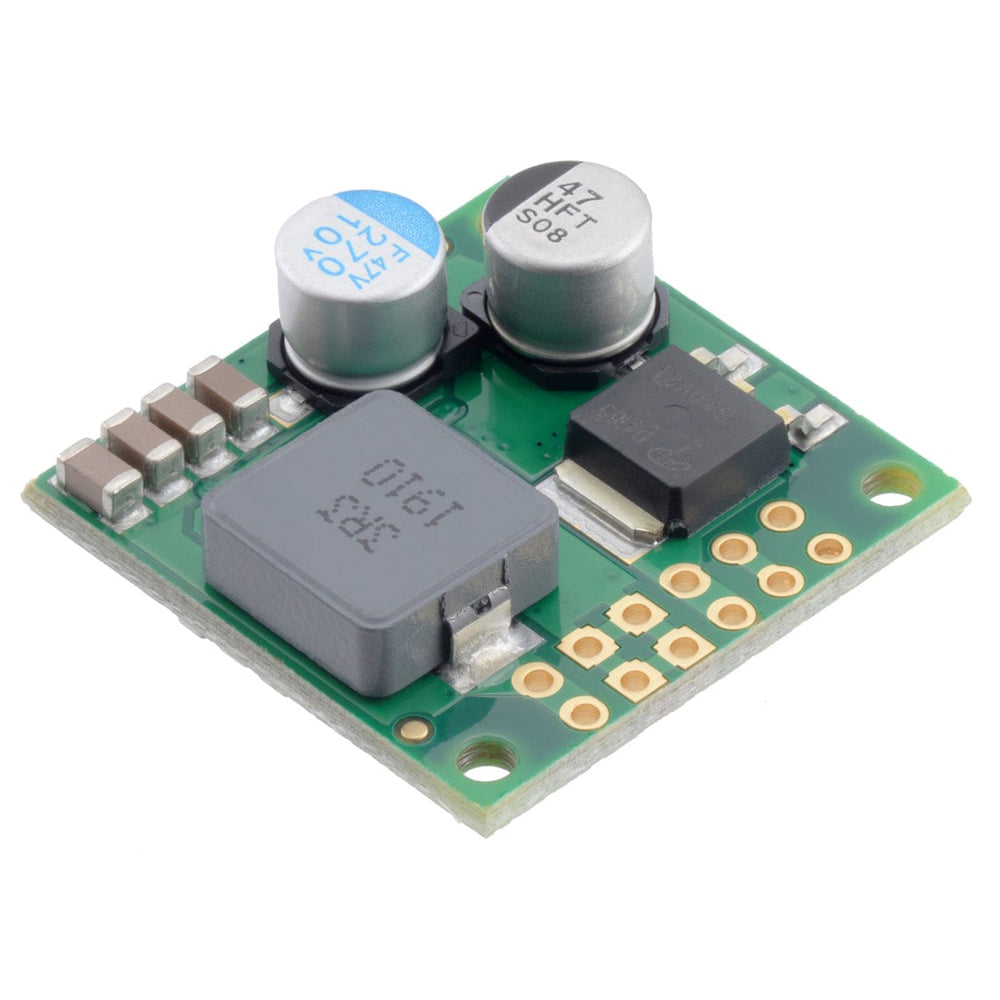
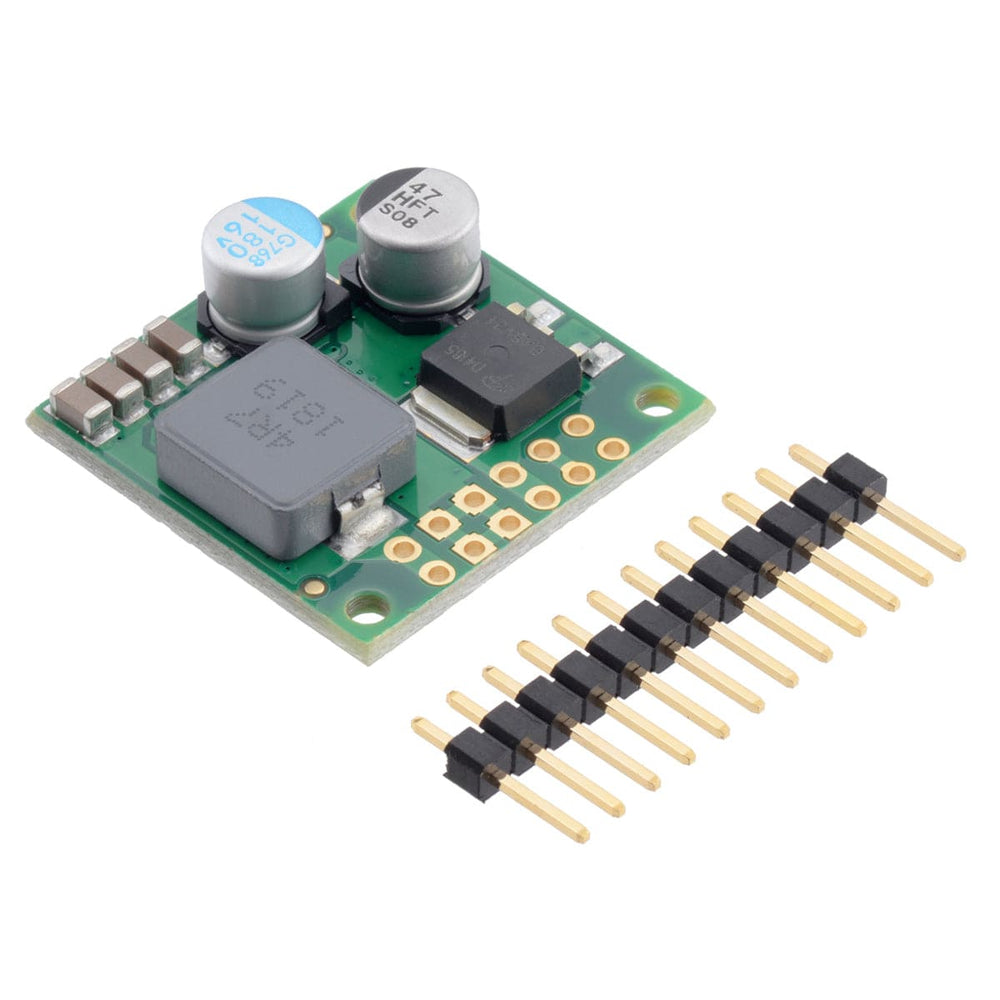
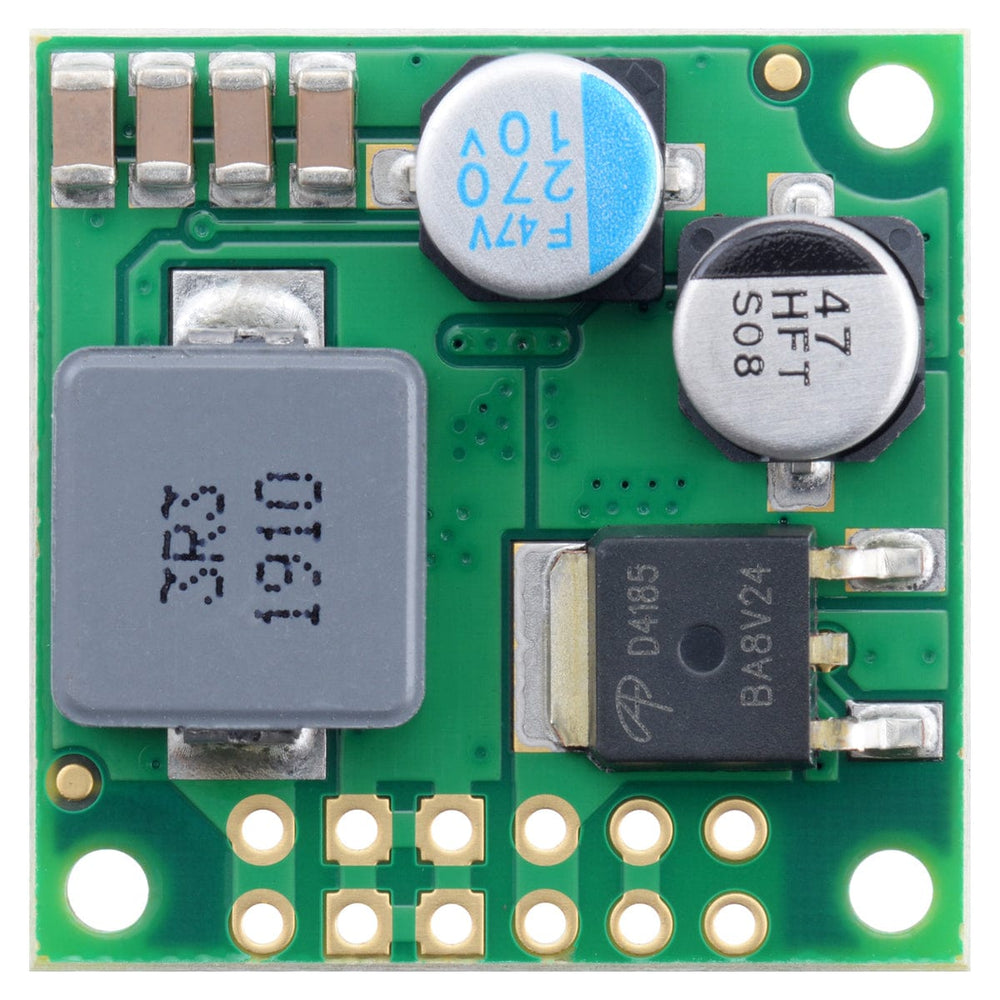
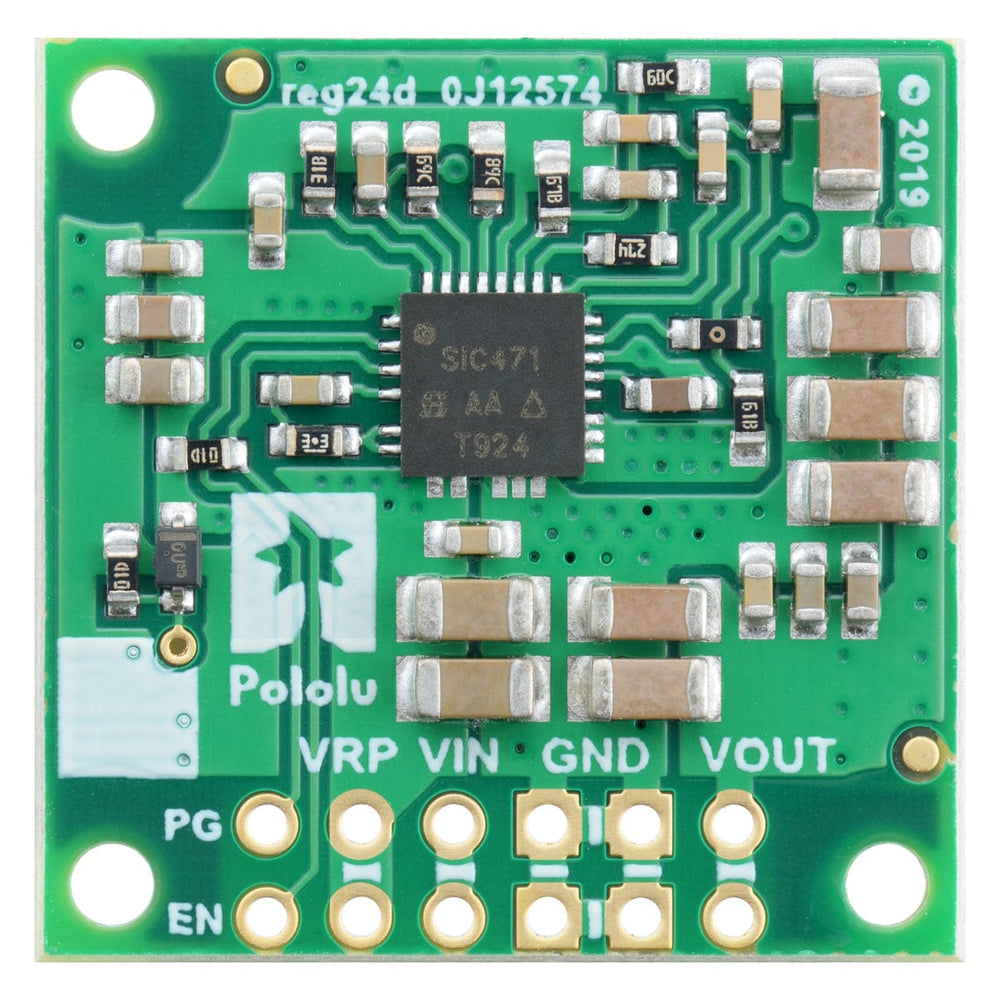
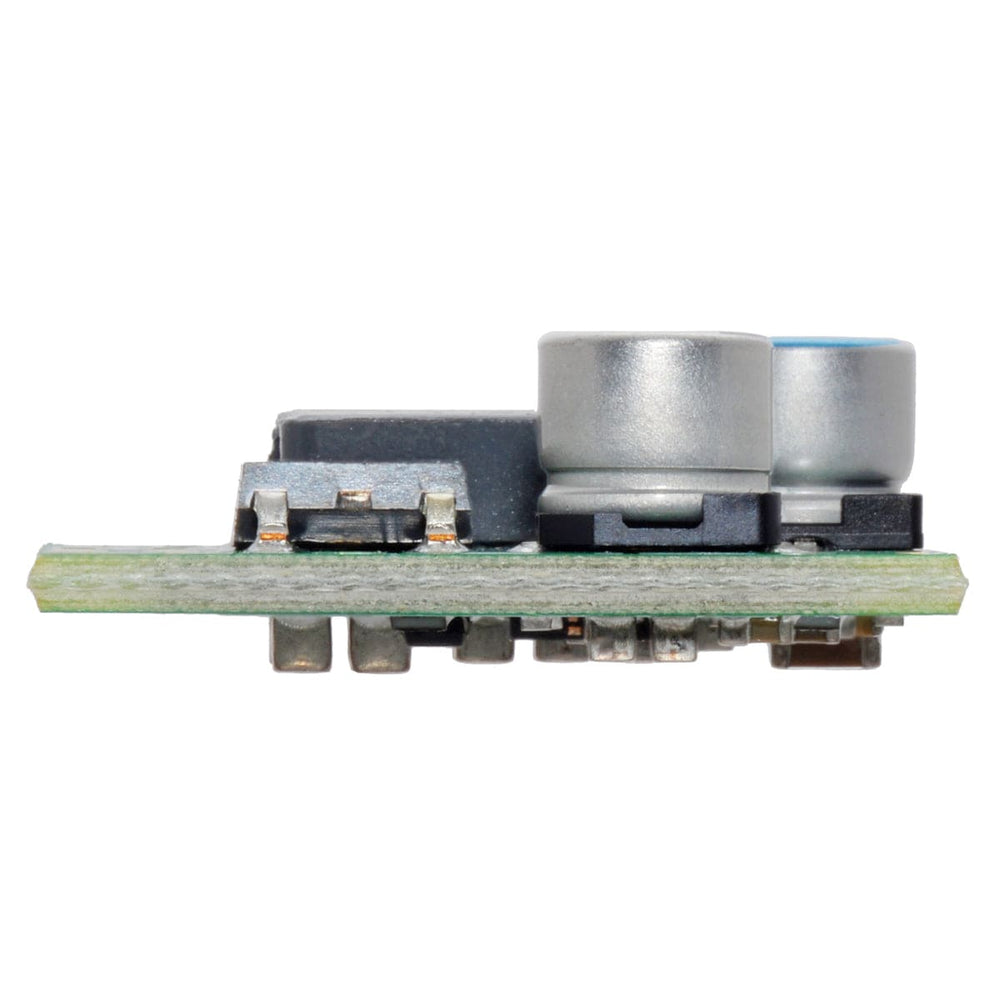
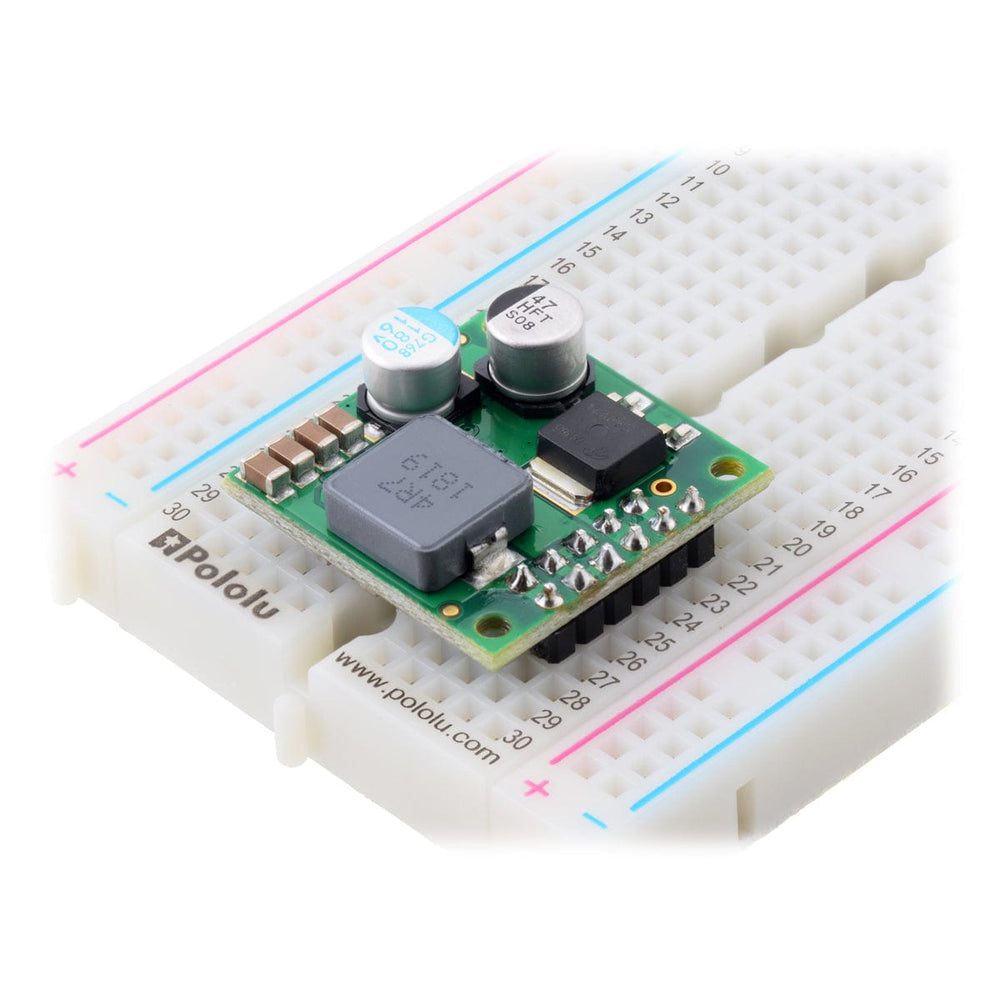
The D36V50Fx family of buck (step-down) voltage regulators from Pololu generates lower output voltages from input voltages as high as 50V. This particular model offers an output of 7.5V with a continuous output current of 5A.
They are switching regulators (also called switched-mode power supplies (SMPS) or DC-to-DC converters), which makes them much more efficient than linear voltage regulators, especially when the difference between the input and output voltage is large.
This family of regulators can typically support continuous output currents between 2A and 9A, depending on the input voltage and output voltage (see the Maximum continuous output current section below). In general, the available output current is a little higher for the lower-voltage versions than it is for the higher-voltage versions, and it decreases as the input voltage increases.
The regulators have input reverse voltage protection up to 40V, output undervoltage and overvoltage protection, over-current protection, and short-circuit protection. A thermal shutdown feature also helps prevent damage from overheating and a soft-start feature limits the inrush current and gradually ramps the output voltage on startup.
Warning: During normal operation, this product can get hot enough to burn you. Take care when handling this product or other components connected to it.
| Minimum operating voltage | 8.3V |
| Maximum operating voltage | 50V |
| Continuous output current | 5A |
| Output voltage | 7.5V |
| Reverse voltage protection? | Y |
| Maximum quiescent current | 4mA |
| Output type | Fixed 7.5V |
| Size | 1″ × 1″ × 0.375″ |
| Weight | 7.0g |

This regulator has six connections, some of which are duplicated on multiple pins: power good (PG), enable (EN), input voltage (VIN), input voltage after reverse protection (VRP), output voltage (VOUT), and ground (GND).
The “power good” indicator, PG, is an open-drain output that goes low when the regulator’s output voltage either rises more than 20% above or falls more than 10% below the nominal voltage (with hysteresis). An external pull-up resistor is required to use this pin.
The regulator, which is enabled by default, can be put into a low-power sleep state by reducing the voltage on the EN pin below 1.2V, and it can be brought out of this state again by increasing the voltage on EN past 1.35V. The quiescent current draw in this sleep mode is dominated by the current in the 100kΩ pull-up resistor from ENABLE to VIN and in the reverse-voltage protection circuit, which altogether will be between 10µA and 20µA per volt on VIN. The tight tolerance of the enable input allows a precise low-VIN cutoff to be set, such as with the output of an external voltage divider powered by VIN, which is useful for battery-powered applications where draining the battery below a particular voltage threshold could permanently damage it.
The input voltage, VIN, powers the regulator. Voltages between 4.5V and 50V can be applied to VIN, but generally, the effective lower limit of VIN is VOUT plus the regulator’s dropout voltage, which varies approximately linearly with the load (see below for graphs of the dropout voltage as a function of the load).
VRP provides access to the input voltage after reverse-voltage protection; this can be used as an output to power other devices, or the input voltage can be connected to VRP instead of VIN to bypass the reverse protection.
VOUT is the regulated output voltage.
All of the connections are arranged on a 0.1″ grid for compatibility with solderless breadboards, connectors, and other prototyping arrangements that use a 0.1″ grid. The PG connection is the only one not accessible along the edge of the board. A 1×12 straight male header strip is included with the regulator.
The power connections (VIN, VRP, VOUT, and GND) are duplicated across both rows of through-holes, allowing two header pins to be used for each connection. Note that the EN and PG pins are not duplicated and are adjacent on different rows, so if you intend to use the regulator on a breadboard, be careful to avoid installing header pins in a way that shorts EN to PG.
Each header pin is only rated for 3A (6A combined per pair), and solderless breadboards are usually not intended to handle more than a few amps, so for higher-power applications, thick wires should be soldered directly to the board.
The efficiency of a voltage regulator, defined as (Power out)/(Power in), is an important measure of its performance, especially when battery life or heat are concerns.

The maximum achievable output current of these regulators varies with the input voltage but also depends on other factors, including the ambient temperature, air flow, and heat sinking. The graph below shows the maximum output currents that these regulators can deliver continuously at room temperature in still air and without additional heat sinking.
During normal operation, this product can get hot enough to burn you. Take care when handling this product or other components connected to it.

The quiescent current is the current the regulator uses just to power itself, and the graph below shows this for the different regulator versions as a function of the input voltage. The module’s EN input can be driven low to put the board into a low-power state where it typically draws between 10µA and 20µA per volt on VIN.

The dropout voltage of a step-down regulator is the minimum amount by which the input voltage must exceed the regulator’s target output voltage in order to ensure the target output can be achieved.
For example, if a 5V regulator has a 1V dropout voltage, the input must be at least 6V to ensure the output is the full 5V. Generally speaking, the dropout voltage increases as the output current increases.
The graph below shows the dropout voltages for the different members of this regulator family:









